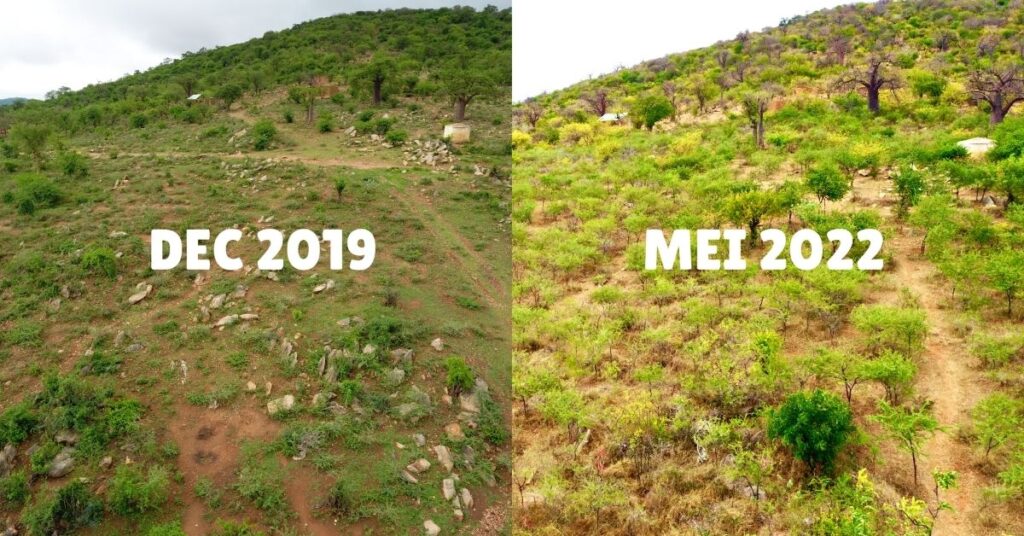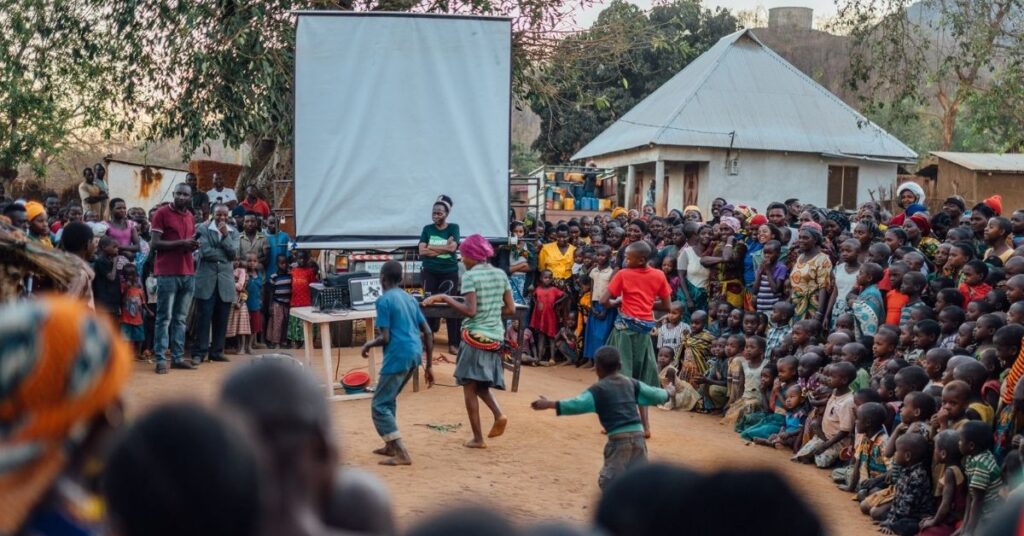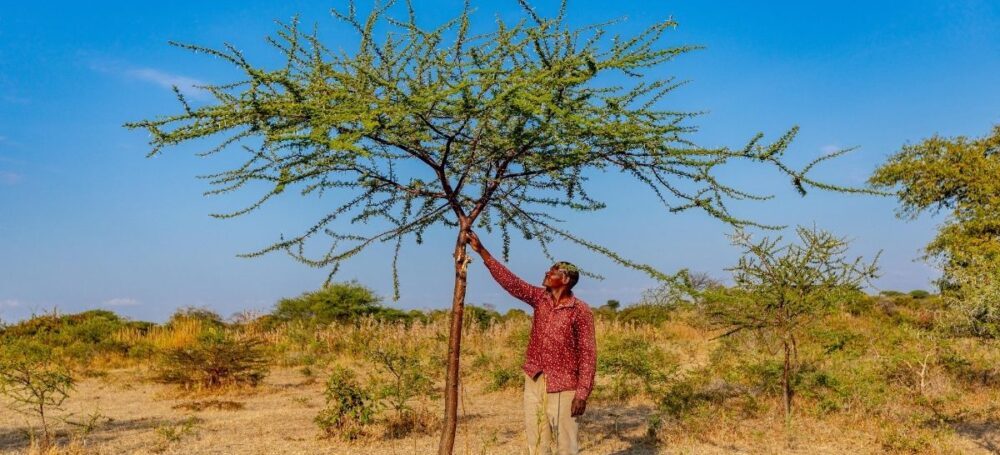Imagine trees could be growing on degraded land. Imagine desertification could be stopped, hundreds of millions would not have to leave their homes. Imagine all that is needed is still there, right beneath our feet. Imagine a whole underground forest is waiting to emerge again. Now just imagine that this is not a dream, but has already been successfully practiced on thousands of farms across the African continent and it is exactly what we are doing right now here in Tanzania. Incredible, isn’t it?
The method that makes it possible is called Farmer Managed Natural Regeneration (FMNR) and was discovered by Tony Rinaudo in the 1980s. He spread his knowledge and enabled thousands of farmers to regreen their land using simple means and even received the alternative Nobel Prize in 2018 for his achievements. As the name suggests, our farmers organise and carry out the reforestation independently on their land (“Farmer Managed”), which results in a very high level of independence for them, as they are not dependent on any aid funds. There’s also “Natural” in the name, as no fertilizers, pesticides, seedlings or any industrial products are necessary to bring entire forests back to life!

Humans have deforested about a third of the Earth’s original forests. This is why in dry areas there are often still huge root complexes in the soil that sprout many small shoots. These can grow into small bushes on their own, which are often eaten by livestock or cut down by people to be used as firewood. However, if farmers take care of these shoots and reduce their number to a few, so that the tree only must care for these, a small bush can become a large tree again in a very short time. At the LEAD Foundation we call this technique “Kisiki Hai” Swahili for “living tree stumps”. This name is much easier to remember, especially for farmers who do not speak English and it also sounds much nicer! With our Projects in Dodoma, Singida an Arusha Region we reached over 200,000 households in over 500 villages and taught them about Kisiki Hai and its benefits. Together we already planted over 14 million trees in central Tanzania! We manage this by training four so-called Champion Farmers for each village. They attend three consecutive trainings over three years, get a certificate and then will pass on their newly acquired knowledge to at least 150 households each. Apart from these trainings, our district coordinators also visit the villages regularly to check how the farmers are going and give them advise. Additionally, we use special methods of rural communication to reach as many people as possible in very few times. These are for example our movie road shows, murals we paint in the villages, brochures and our bulk SMS. All this is only possible because we work closely together with local leaders.

Kisiki Hai has brought about far-reaching advantages to the farmers and communities we are working with. Firstly, farmers who made use of Kisiki Hai have experienced positive impacts on the environment because the newly grown trees prevent soil erosion, serve as windbreakers, provide shade and their leaves serve as fertilizer for the soil. This means that more moisture is retained in the soil, the fertility of the soil and biodiversity increases, the groundwater table can recover and, in some places, even dried-up streams have started to carry water again! All these impacts lead to better resilience against the climate crisis. A healthier environment in turn brings social improvements for the whole communities because the trees also increase the yield in their fields. This ensures increased food security and a better nutrition for the whole communities. In addition, the fact that trees grow in one’s own fields means that one must travel shorter distances to get firewood, a work especially done by women and children. Higher yields, both from plants and from larger and healthier animal herds, will of course also lead to higher incomes for
the farmers, which will have additional positive effects such as higher education or higher employment rates. The interaction of all these impacts of the trees brings a new level of independence and empowerment for our villages and raises hope for the future.


Comments are closed.